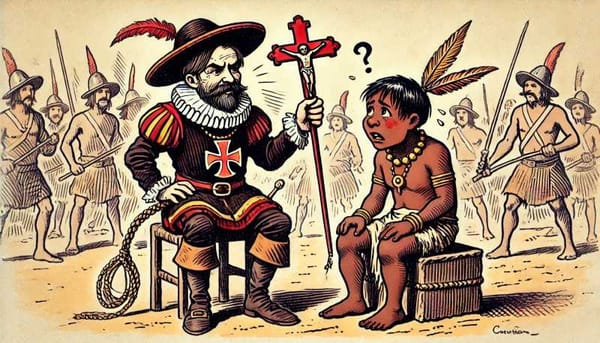Experience Tenochtitlan with digital technology to walk around it
José Francisco Salgado Rodríguez, from the Faculty of Higher Education (FES Aragón), developed software to walk through the streets of the Aztec capital and observe it as it was before its fall.

Faced with the impossibility of building a time machine, José Francisco Salgado Rodríguez, from the Facultad de Estudios Superiores (FES) Aragón, digitalized the city of Tenochtitlan to travel to it. The objective is that by means of a computer or cell phone it can be visited virtually and appreciated as the Spaniards saw it when they arrived at Lake Texcoco, 500 years ago.
"Since I was a child I have been passionate about the pre-Hispanic era and, in particular, the Mexica culture. In fact, when I reached the age to choose a career I had a serious debate about whether to study History, Archaeology, or Computer Engineering; in the end, I chose the latter option, but that interest in our past has always been there with me, accompanying me," he said.
Therefore, his software Virtual Tour, Tenochtitlan, besides being one of the projects that make up the Mexico 500 program (with which UNAM commemorates the five centuries since the fall of the Aztec capital), is also the culmination of a dream that Professor Salgado Rodriguez had as a child: to walk through the streets of this city built in the middle of a lake and see it in all its splendor.
By accessing the electronic address http://ingenieria.aragon.unam.mx/tenochtitlan/, you can freely walk through the Mexica avenues with only the help of the keyboard arrows and the space bar, or the touch screen in the case of Android devices. An application for iOS systems will also be available soon.
According to maestro Salgado, its digital reconstruction is as faithful as possible because it is practically identical to the model that could be seen in the Templo Mayor Museum before the monolith of Tlaltecuhtli took its place. "There are other scale representations such as the one at the National Museum of Anthropology or the one exhibited at the Zócalo subway station, but this one is based on the work of Dr. Eduardo Matos Moctezuma and, therefore, it is the most rigorous".
In this tour, the user can walk through the ceremonial zone and access different buildings, which were digitized in such detail that even on the steps of the Huey Teocalli (Templo Mayor) blood stains can be seen to indicate the site where human sacrifices were made.
With a soundtrack played by conch shells and teponaztlis, the web surfer can learn what each building was used for and to which deities it was consecrated. "We have yet to have the characters with whom our protagonist crosses paths speak Nahuatl; perhaps they will do so soon," he said.
On the opening screen you can read the epigraph: "In quexquichcauh maniz cemanahuatl, ayc pollihuiz yn itenyo yn itauhcain Mexico-Tenochtitlan" ('while the world remains the glory and fame of Mexico-Tenochtitlan will never perish'), taken from the Memoriales de Culhuacan and chosen by Salgado Rodriguez, because it encompasses the meaning of the project. If the Aztec capital knew how to survive in our stories, now, in the 21st century, it has come back to life thanks to the digital.
A journey through time
The expert estimates that developing Virtual Tour, Tenochtitlan, took about a year. "Adding the time of the first stage (where I only had the 3D models), plus the time to model characters, integrate everything into a videogame engine (Unity) and programming, it took me 12 months, but this story goes back even further".
As a student, the academic created one of the first digital rides on record at UNAM: it was a recreation of Teotihuacan. "In fact, I graduated with that project and later, as a professor, I directed two theses on similar initiatives: one of them was a digitalization of Xochicalco".
In the presentation of the project, Paola Morán Leyva, technical secretary of Linking of the Coordination of Cultural Dissemination of the UNAM, said that of the contents of portal Mexico 500 the most popular is a video game called Yaopan, which embodies what is described in the Lienzo de Tlaxcala.
The city of Tenochtitlan was destroyed by the Spanish conquistadors, and today it is impossible to know how the ceremonial precinct was built. Thanks to the excavations of the Templo Mayor project from 1978 to 1982, directed by archaeologist Eduardo Matos Moctezuma, and later retaken by other experts, it is possible to understand the conformation of that sanctuary, which was captured in different models such as the one in the Templo Mayor Museum, which was the reference for a virtual reconstruction.
Based on this, university professor José Francisco Salgado creates and guides the audience through different temples and buildings of the mythical Aztec city through the virtual tour Tenochtitlan, which is a virtual reality game with the possibility of controlling an avatar to walk and jump in some of the main streets of the disappeared city.
The educational activities developed with video games, allow to reach of different domains and retention of new knowledge, the projects with virtual development allow access to the interaction of these environments, the visual and sound stimuli submerge the user in simulated or reconstructed worlds to know what had been denied. Thanks to this digitalization it is possible to admire spaces that no longer exist and understand a little of their history, as in this case, with the Tenochtitlan Virtual Tour.
Source: UNAM




